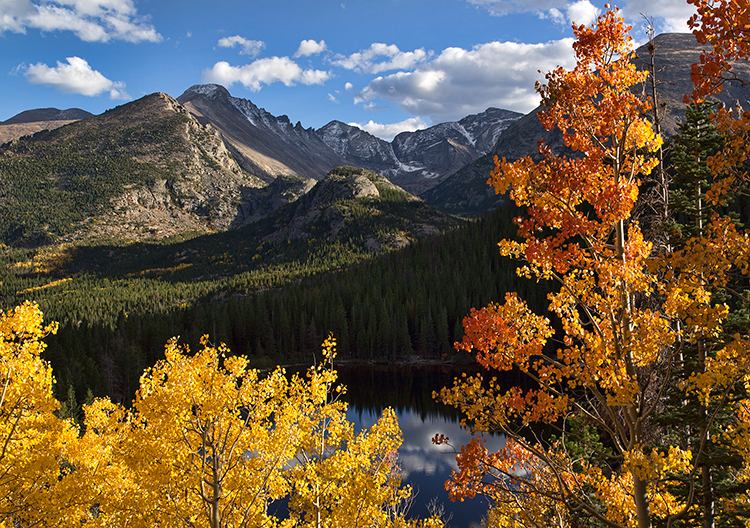
Visitors per year: 4 million
Size: 265,000 acres
Highest Point: 14,255 feet (Longs Peak)
Designated Back Country Sites: 260
Nearest Towns: Estes Park and Grand Lake
Estes Park
Most people enter the park through the friendly riverside village of Estes Park. There are plenty of kitschy t-shirt shops here, but you can also sign up for a climbing course with the Colorado Mountain School (one of the finest guide operations in the state), climb to the top of Prospect Mountain (or take the tram) or lounge on the riverfront at one of the town’s bubbling bistros – Ed’s Cantina has a wonderful riverside patio and rip-roaring margaritas, while Poppy’s serves up thick and savory mountain pizza pies. For ghostly tours (and the town’s most refined lodging), head to The Stanley Hotel, where ‘All work and no play makes Jack a dull boy’ – it was here where Stephen King drew inspiration for the setting of his 1977 novel about a family snowbound in a haunted hotel. For travelers on a budget, you can camp in numerous spots just outside of town, or share a cabin with friends at the YMCA of the Rockies. They have 860 acres, plenty of activities (including line dancing) and serene private cabins.
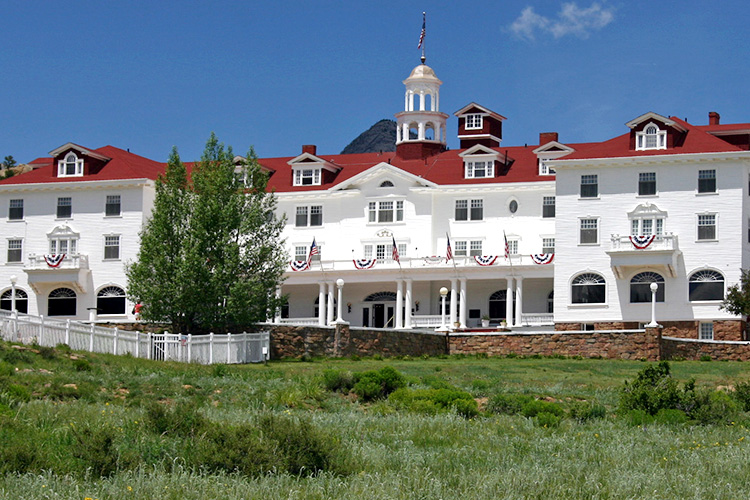
Bear Lake
The heart of Rocky Mountain National Park is found at Bear Lake. On your way here from either Estes or Grand Lake, take a stop at the Moraine Park Museum and Beaver Meadows Visitor Center for some trail 411 and a few exhibits on area geology. But don’t dawdle – the wilds await. There’s a short interpretive trail that circumnavigates the lake, or you can continue your trip with longer jaunts to the wispy Alberta Falls and a series of glittering alpine lakes. Camp out in the middle of a ponderosa pine forest at the ever-popular Moraine Park Campground or the quieter Aspenglen Campground.
Longs Peak
Overlooking it all is the imposing jewel-shaped Longs Peak. One of Colorado’s more difficult 14ers (a mountain with a summit over 14,000 feet), the peak can be climbed in a day for fit (and well-acclimated) hikers. There are technical, ropes-required climbing routes that take you straight up the 2400-foot Diamond Face that runs from the crystalline Chasm Lake all the way to the precipitous summit, or there’s a non-technical (but still exposed-to-high-ledge hiking) route called the Keyhole Route. The hiking around here is excellent, and the tents-only Longs Peak Campground offers spectacular views at the edge of pristine wilderness. To get ready for your Long’s Peak summit bid, head up the nearby 11,000-foot Twin Sisters Peak, which offers jaw-dropping views of Longs, or stop for quiet reflection at the stone St. Malo Church.
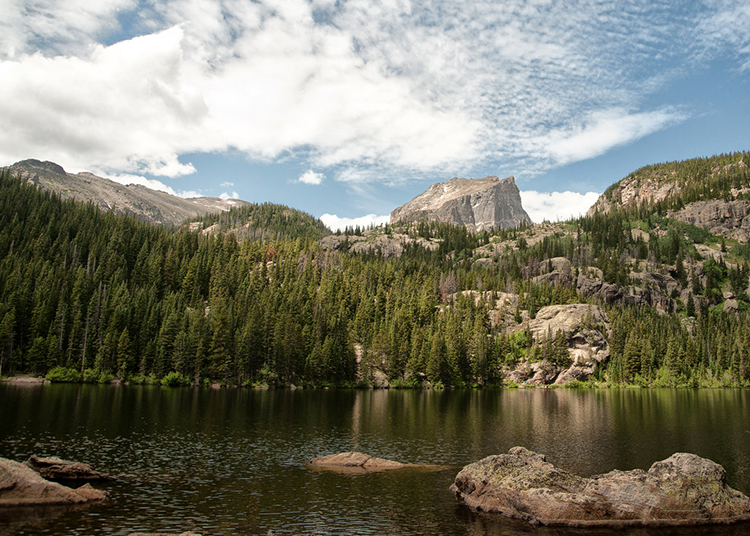
Grand Lake
On the western edge of the park, Grand Lake is Colorado’s biggest, deepest natural body of water. There’s good boating here, plus plenty of hiking trails lead right from town into the park. There are two nearby alpine ski areas (Winter Park and Ski Grandby Ranch), and as with all of Rocky Mountain National Park, there’s great Nordic skiing and snowshoeing just about anywhere you go during the winter. The Shadowcliff Lodge and Retreat Center has affordable dorm rooms, cozy riverfront cabins and perfect access to hiking trails into the park. Make reservations for a five-course, prix-fixe dinner at the superb O-A Bistro, or just show up for lunchtime crepes.
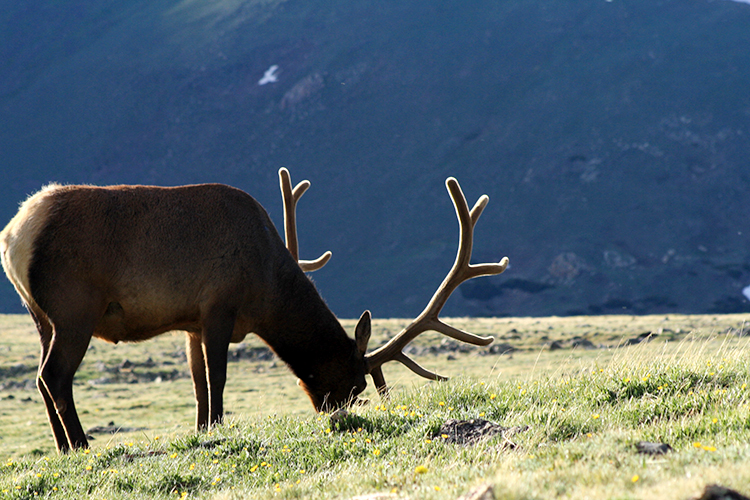
Enter the park from either Grand Lake to the west or Estes Park to the east. There are shuttles to the park from Estes Park at the town Visitor Center as well as park-operated shuttles accessible from the Beaver Meadows Visitor Center in the summer, but you’ll need a car from Grand Lake. You can drive your car through the park with pull-outs throughout, or ride a bike. Within the park, a few trails were damaged by the 2013 floods, but park staff are quickly rebuilding washed-out bridges. Old Fall River Road is closed due to flood damage, and it will probably remain closed through 2015. Trail Ridge Road is the main artery through the park, but it’s inaccessible during the winter.
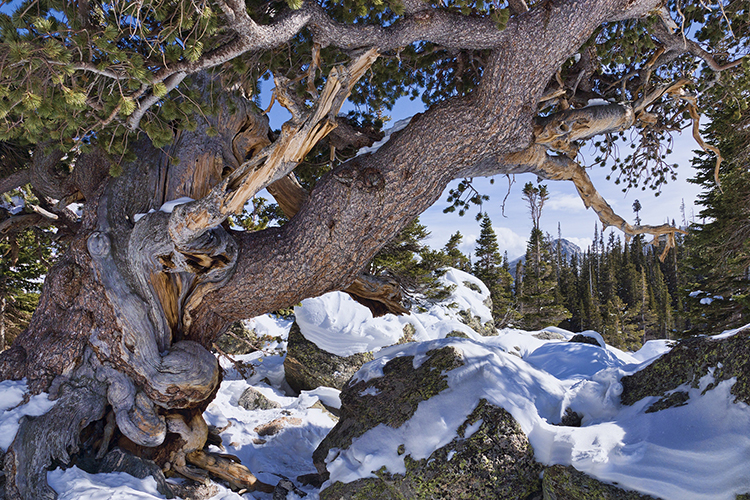
Most of the dangers come from the sky. Beware of dehydration, sunburns and lightning. Stay hydrated, stay off the summits after noon (lightning strikes are common during afternoon storms) and protect yourself with a hat and good sunglasses. If camping in the backcountry, follow proper bear etiquette when setting up camp and be wary of camping near dead trees. Colorado’s ecosystem is delicate, so stick to maintained trails and definitely let friends know where you are going. For overnighters, you’ll need to check in with the Backcountry Office.
Colorado is about as laid-back as you get. You don’t need to dress up (even at the most fancy of restaurants in the mountains) - hiking shoes or flip-flops are common footwear. For good service, a 20 percent tip is standard. Marijuana is legal in Colorado (but still illegal by US Federal Law), but smoking marijuana in public is prohibited in Colorado.
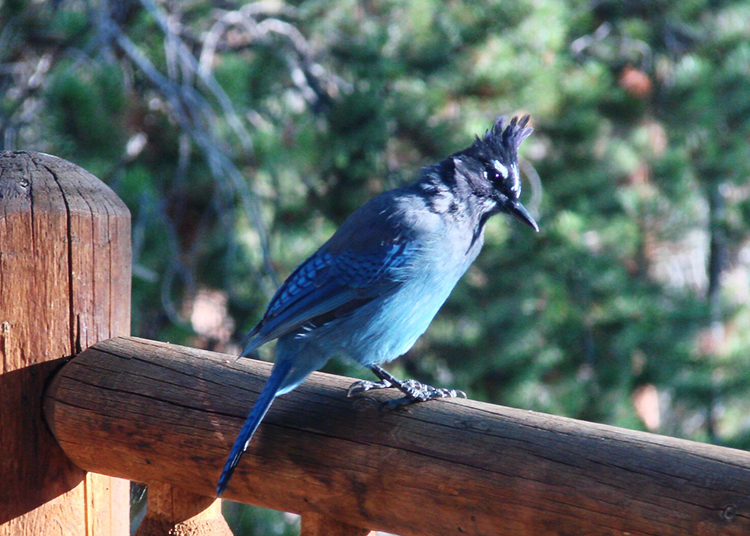
Camping sites can fill up quickly. Expect to book your site up to six months in advance. You’ll also want to pre-plan your overnight backpacking trip with the Backcountry Office, where you can reserve established backcountry camping spots and learn about their backcountry travel requirements (like bringing a bear canister – available in Estes). If you are looking to do a guided hike, climb, mountain bike or rafting trip on the nearby Poudre River, you should consider booking at least a few weeks in advance.